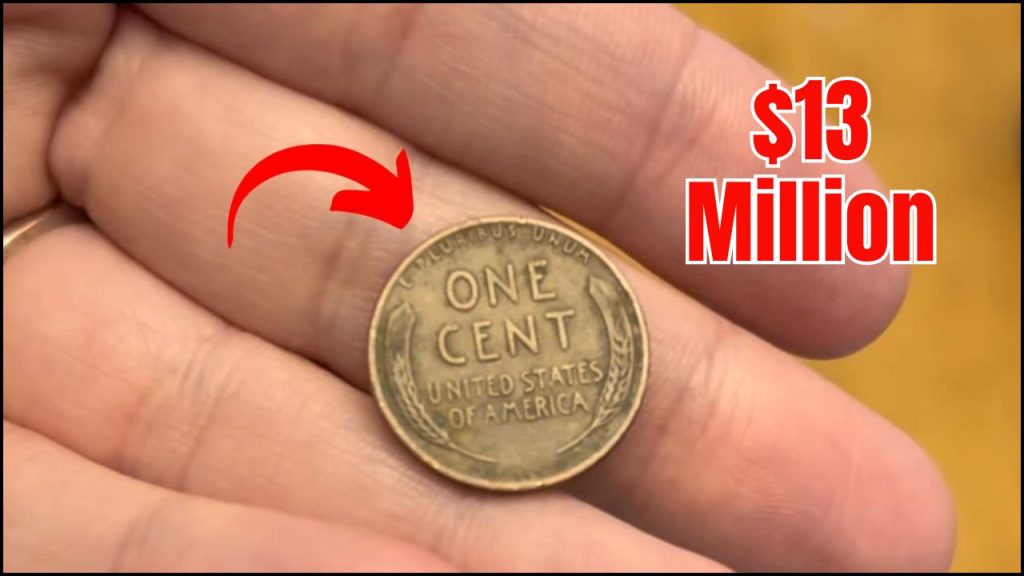
Imagine holding a penny in your hand that could be worth $13 million. Sounds like a fantasy, right? But in the world of coin collecting, that fantasy might not be as far-fetched as it seems. One particular coin—the Lincoln Wheat Penny—is rumored to be worth that jaw-dropping amount. Even more exciting, some believe it could still be floating around in everyday circulation.
Let’s dive into the story behind this tiny piece of copper and why it’s capturing the imagination of collectors everywhere.
A Brief History of the Lincoln Wheat Penny
The Lincoln Wheat Penny was first introduced in 1909 to honor the 100th birthday of President Abraham Lincoln. It was the first time a U.S. president appeared on a coin used by the public. The front (or “obverse”) of the coin shows Lincoln’s profile, designed by artist Victor David Brenner. On the back (or “reverse”), you’ll find two wheat stalks framing the words “ONE CENT” and “UNITED STATES OF AMERICA.” This wheat design was used until 1958.
This coin isn’t just currency—it’s a piece of American history.
Why Would a Penny Be Worth $13 Million?
So, what makes a coin that originally cost just one cent possibly worth millions? The answer lies in a mix of rarity, condition, historical quirks, and a bit of mystery.
One famous example is the 1943 copper penny. During World War II, most pennies were made from steel to save copper for the war effort. But a few copper pennies were made by mistake. These error coins are now some of the most valuable in the world, with prices reaching into the millions. A perfect, rare combination like this—especially if it’s in flawless condition—can send the value skyrocketing.
The Lincoln Wheat Penny, Valued at $815K, Still in Circulation
The Lincoln Wheat Penny Valued at $100K, Still in Circulation
Condition is Key
The state of a coin—what collectors call its “grade”—plays a big part in how much it’s worth. Coins are graded on a scale from 1 to 70. A grade of 70 means the coin is in perfect, uncirculated condition.
For a Lincoln Wheat Penny to be worth $13 million, it would likely need to be in mint condition. That means no scratches, no wear, and a shiny finish that looks like it just came from the mint—even if it’s decades old.
Rare Coins Come From Rare Circumstances
Most valuable coins have something unusual about them. Maybe they were made with the wrong metal, like the 1943 copper penny. Maybe the mint made only a few before changing the design. Or perhaps it was made at a mint that didn’t produce many that year.
Mint marks—tiny letters on the coin—tell you where it was made. Some mints, like the one in San Francisco (marked “S”), produced far fewer coins than others. That makes pennies from those locations more valuable to collectors.
Now, imagine a coin with a rare mint mark, made from the wrong metal, and kept in mint condition for over 80 years. That’s the kind of penny that could be worth millions.
Could This Penny Still Be Out There?
It’s rare, but not impossible.
Billions of Lincoln Wheat Pennies were made between 1909 and 1958. Most are worth just a few cents today. But hidden among them could be a treasure—a rare coin missed by collectors and still sitting in a piggy bank or forgotten in a drawer.
There have been stories of people finding rare coins in rolls from the bank, in change jars, or even at garage sales. This is why many collectors—and curious people—are checking their coins more closely than ever.
How Do You Know If You Have One?
If you think you’ve found a rare Lincoln Wheat Penny, don’t rush to spend it!
The first step is to look at the year. Anything from 1909 to 1958 is a Lincoln Wheat Penny. Then, check the mint mark and see if there’s anything odd about the design or metal. If you suspect it might be special, take it to a coin expert (called a numismatist). They use tools like microscopes and metal tests to check for authenticity.
They’ll also check the coin’s grade and give you a better idea of what it might be worth.
The Bigger Picture: Why It Matters
Coins like the $13 million Lincoln Wheat Penny don’t just make headlines—they spark interest in a fun and educational hobby. Collecting coins teaches history, art, geography, and even a little science.
More importantly, they show us that even the smallest, most ordinary things can hold great value. Whether it’s a penny from the past or a family heirloom, treasures are often hiding in plain sight.
Final Thoughts
The Lincoln Wheat Penny valued at $13 million may still be out there, waiting to be found. And while the odds of discovering it are slim, the excitement of the hunt is what keeps collectors going.
So, next time you get change at the store, take a moment to look at those pennies. You never know—one of them might just change your life.